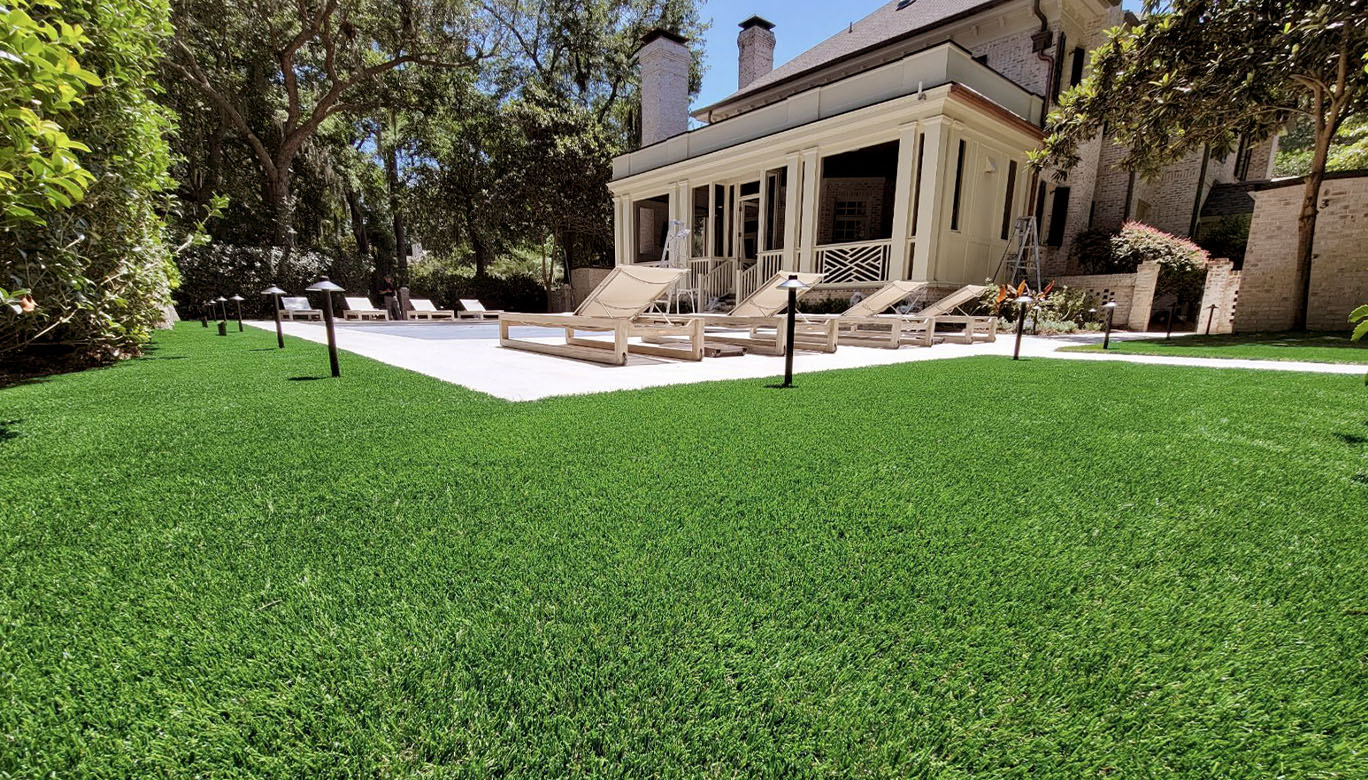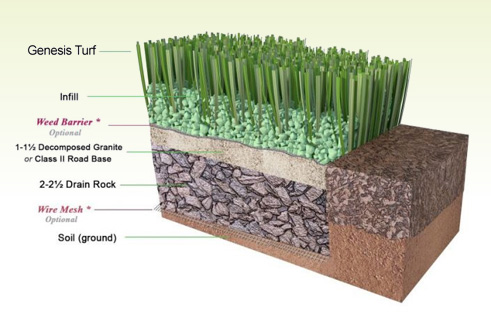Reputable Phoenix Turf Companies Providing Best Synthetic Grass Installation
Reputable Phoenix Turf Companies Providing Best Synthetic Grass Installation
Blog Article
Delve Into the Environmental Perks of Opting for Synthetic Grass Solutions
The fostering of synthetic turf options provides an engaging possibility to attend to pressing ecological difficulties. By dramatically lowering water usage and reducing the application of dangerous chemicals, these options not only advertise sustainable landscape design however additionally protect regional ecosystems. In addition, the lower carbon impact connected with reduced upkeep activities adds to a much more sustainable approach to land monitoring. The ramifications of these advantages prolong beyond simple preservation initiatives, increasing concerns regarding their long-lasting impact on habitat conservation and general ecological equilibrium. Discovering these measurements reveals a complicated interplay worth considering.
Water Preservation Conveniences
Among the most significant advantages of synthetic turf is its ability to preserve water. Typical grass yards require significant irrigation, specifically in locations prone to dry spell or water limitations. On the other hand, fabricated turf does not need watering, considerably lowering the general need for water sources. This feature is particularly valuable in dry regions where water shortage is a pushing issue.
By eliminating the demand for normal watering, synthetic grass adds to sustainable landscape techniques and assists alleviate the ecological influence of extreme water usage. Additionally, the conservation of water expands to the decrease of runoff, which can lead to soil erosion and waterway pollution.
Furthermore, the installment of synthetic grass permits municipalities and house owners to assign water resources much more efficiently, focusing on essential uses such as drinking water and agriculture. The shift towards synthetic grass not only advertises accountable water usage yet likewise aligns with more comprehensive environmental goals focused on protecting natural deposits.
As communities increasingly prioritize sustainability, the water conservation advantages of fabricated grass offer an engaging instance for its adoption in residential and commercial landscaping tasks.
Minimized Chemical Use
The transition to synthetic grass substantially lowers the dependence on chemical therapies commonly utilized in natural yard upkeep. Conventional grass management typically includes the application of herbicides, chemicals, and plant foods to promote growth and control pests. These chemicals can position dangers to human health and wellness, neighborhood wildlife, and the setting, adding to soil and water contamination.
On the other hand, artificial grass eliminates the need for these unsafe substances. As soon as mounted, it requires very little maintenance, mainly consisting of regular cleansing and irregular infill replenishment. This reduction in chemical usage not just benefits the immediate environment but also adds to wider eco-friendly security. By lessening the launch of synthetic compounds right into the ecological community, synthetic turf promotes much healthier soil and water systems.
Moreover, the lack of chemical runoff connected with synthetic grass installments aids protect neighborhood waterways from air pollution, sustaining water life and preserving biodiversity. Turf installation phoenix az. As neighborhoods significantly prioritize lasting practices, choosing artificial lawn offers a feasible service that lines up with environmental conservation objectives. Via this shift, residential or commercial property proprietors can take pleasure in lavish eco-friendly rooms without endangering ecological health, leading the way for a click this site much more sustainable future
Lower Carbon Footprint

Furthermore, the installation of synthetic grass can lead to considerable water preservation. All-natural lawns require considerable quantities of water for irrigation, which not just contributes to the carbon impact related to water extraction and treatment however likewise pressures neighborhood water sources. In comparison, synthetic grass needs marginal maintenance, needing no watering, thereby considerably minimizing water usage and its associated energy prices.
In addition, the long life of synthetic grass contributes to its decreased carbon effect. With a life-span of up to 15 years or more, the need for constant substitutes is decreased, causing less waste and lower power intake in manufacturing and getting rid of standard turf choices. On the whole, synthetic grass offers a lasting choice for ecologically mindful landscaping.
Environment Preservation
Environment preservation is an important factor to consider in the debate over landscape design selections, especially when contrasting man-made grass to all-natural lawn. Natural turf yards usually call for considerable upkeep, consisting of making use of pesticides, plant foods, and herbicides, which can adversely influence local ecological communities. These chemicals can leach into the soil and rivers, harming indigenous plants and animals and interrupting local habitats.
Synthetic turf gets rid of the need for hazardous chemicals, thereby safeguarding close-by wildlife and maintaining the honesty of bordering ecosystems. The setup of man-made turf can lead to the conversion of previous lawn locations right into more biodiverse landscapes, such as pollinator gardens or native plant areas, which can support local wild animals.
Inevitably, Read Full Report the transition to man-made lawn not just saves water and decreases upkeep initiatives but additionally official source cultivates an extra harmonious partnership between human tasks and the natural environment, promoting environment preservation in the procedure.
Long-Term Sustainability
Long-lasting sustainability is an important consider evaluating the benefits of synthetic grass over standard yard yards. One of the most significant benefits of synthetic grass is its sturdiness; it can last up to 15-20 years with marginal upkeep, whereas all-natural lawn needs regular reseeding and substitute. This durability decreases the requirement for continuous resources, such as water, fertilizers, and pesticides, which are crucial for keeping a healthy and balanced grass yard.
In addition, synthetic grass adds to a decrease in carbon exhausts linked with lawn treatment devices. Traditional yards usually call for gas-powered lawn mowers, leaners, and blowers, every one of which contribute to air contamination. Arizona artificial turf. In comparison, artificial turf eliminates the need for such devices, promoting a cleaner environment
In addition, the production of synthetic grass increasingly utilizes recycled materials, enhancing its sustainability account. As suppliers embrace green methods, the environmental footprint of synthetic grass remains to decrease.

Verdict
The fostering of synthetic grass options provides significant environmental benefits, including considerable water preservation, decreased reliance on damaging chemicals, and a reduced carbon impact. Man-made turf help in preserving natural environments by reducing land disruption and promoting long-term sustainability through the usage of resilient products. Collectively, these aspects underscore the capacity of fabricated grass to contribute favorably to ecological wellness and offer a sensible choice to traditional landscape design techniques in a progressively resource-conscious world.
In comparison, man-made lawn does not need watering, significantly decreasing the overall need for water resources. By reducing the launch of synthetic substances into the community, artificial turf promotes much healthier dirt and water systems.
Moreover, the installment of fabricated turf can result in significant water preservation. In contrast, synthetic turf requires marginal upkeep, calling for no watering, thus significantly minimizing water use and its associated power costs.

Report this page